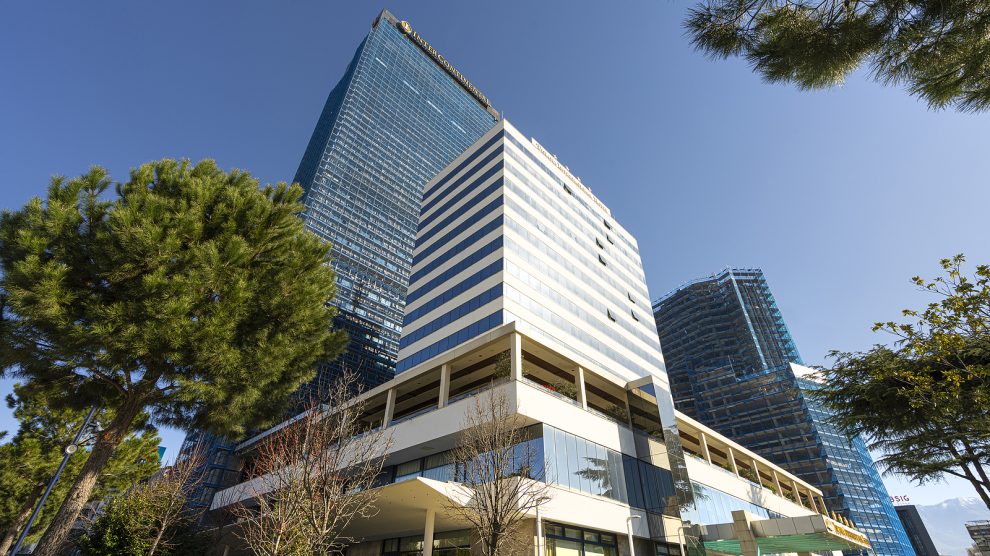Migration to urban centres, remittances from the Albanian diaspora, and post-earthquake reconstruction have long made construction one of the largest sectors of Albania’s economy. As tourism soars to unprecedented levels, the boom is set to continue.
Visitors to Albania this summer could be forgiven for thinking that the country remains a work in progress. Construction sites dominate the landscape, from the mountains of the north and east to the beach resorts of the south and west.
- North Macedonia, Albania, and the long march to the EU
- Five lesser-known gems of the Albanian Riviera
- Old enemies make new friends: Turkey in the Western Balkans
The data backs up these eyewitness impressions. In 2022, the construction industry accounted for 11.2 per cent of Albania’s gross domestic product (GDP)—the largest share of any country in Europe and Central Asia.
In the fourth quarter of last year, construction made the largest positive contribution (+1.69 per cent) to the 4.73 per cent GDP growth of any industry. The construction sector is one of the largest sectors of the economy and is a vital source of employment, accounting for eight per cent of the workforce.
Continued residential construction
Construction’s prominence in the Albanian economy is not new, while successive and complementary forces have contributed to maintaining its importance.
“Since the collapse of communism, Albania’s construction industry has emerged as a pivotal driver of its economic growth,” Dr Ravik Mima, author of the Vienna Institute for International Economic Studies’ April forecast for Albania, tells Emerging Europe. “The initial surge in this sector was fuelled by a genuine need for housing, especially in urban areas, a trend catalysed by population migration from rural settings.”
When communism fell in 1991, Albania was among the poorest countries in the region and suffered a mass exodus of Albanians from rural areas as they searched for economic opportunity in the capital, Tirana, and abroad.
“For the first two decades, private construction boomed, supported primarily by the rising income and savings of residents, augmented by the robust financial intermediation provided by the banking sector,” says Dr Mima. “Additionally, remittances from the pioneer generation of post-communist emigrants significantly contributed to this growth.”
Tirana grew rapidly and continues to grow by 30,000 people each year, creating unwanted sprawl and a perpetual need for more housing. The Tirana 2030 initiative aims to stop the sprawl by re-concentrating construction into the city’s core.
Still, 2008 crash led to a period of sector maturation and decline as businesses turned away from a market that appeared saturated. Construction reached its lowest level since 2005 in 2013. Since then, however, renewed demand for residential construction has returned growth to the sector—aided by over one billion euros from the state budget between 2020 and 2022 committed to reconstruction projects in the aftermath of an earthquake in 2019.
In 2020, half of total domestic investment was focused on housing, compared to a quarter in other Balkan countries. “The large majority of new constructions include residential buildings in major cities such as Tirana, Durres, Elbasan, Korca, and Vlora,” says Andi Memi, a partner at Hoxha, Memi and Hoxha, a law firm. Residential buildings accounted for 42.7 per cent of the approximate value of building permits issued in the first quarter of 2023, while non-residential buildings account for 42.3 per cent and the remainder are civil engineering.

The rise of tourism
“However,” Dr Mima notes, “in recent years, the impetus propelling the construction sector has evolved. Firstly, a new trend has emerged among affluent households, both resident and non-resident – including not only the Albanian diaspora but also foreign investors – who are showing an increasing predilection for owning multiple homes as investment assets in a burgeoning housing market.”
“Secondly, the tourism sector, having undergone substantial growth over the past decade and showing promising potential for further expansion, has spurred non-residential construction projects like hotels and resorts,” adds Dr Mima.
Last year saw a 48.5 per cent increase from 2021 in income from tourist arrivals and tourism accounted for 15.8 per cent of GDP. Some 7.5 million foreign tourists visited the country of 2.8 million in 2022, but with a 35 per cent increase in tourists in 2023’s January to April period, the country expects to host at least ten million people this year.
Flights into Tirana are not always cheap, and many visitors fly into neighbouring countries and enter Albania by bus or ferry. That is set to change in October, when Ryanair will expand to Tirana, launching 96 budget flights weekly on 17 routes.
With even more visitors expected in the country’s mountains, villages, and Ionian Sea riviera in 2024, tourism seems set to continue to surge and, in turn, boost construction further.
Unlike many news and information platforms, Emerging Europe is free to read, and always will be. There is no paywall here. We are independent, not affiliated with nor representing any political party or business organisation. We want the very best for emerging Europe, nothing more, nothing less. Your support will help us continue to spread the word about this amazing region.
You can contribute here. Thank you.







Add Comment